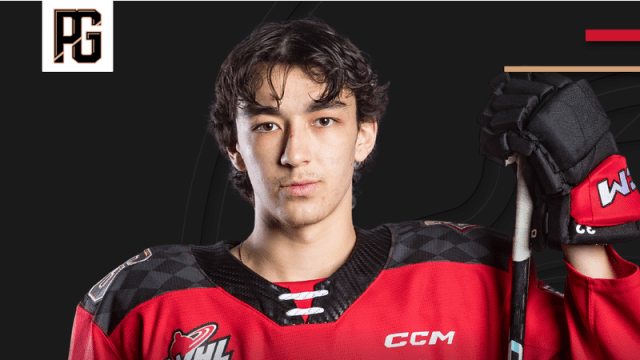The Washington Capitals selected right wing Terik Parascak with the 17th overall pick in the 2024 NHL entry draft Friday night at The Sphere in Las Vegas, Nevada.
Parascak, 18, is a 6’-0” right winger from Lethbridge, AB, Canada, who spent last season playing for the Prince George Cougars in the Western Hockey League (WHL).
Parascak’s a high-end quick-possession player, capable of both setting up plays and finishing them. He doesn’t just get open, but constantly adjusts his positioning to be in the perfect spot with perfect timing. (Elite Prospects)
OTHER TAKES
Parascak is an intriguing prospect who produced 43G–62A for the Cougars in the regular season and was also an astounding plus-49. Parascak extends plays along the wall and escapes pressure in small areas. He isn’t the biggest, or strongest, prospect but he’s plenty slippery and hard to defend. His three-zone detail is reliable as well. I’m monitoring him in the playoffs to see how he handles the extra attention that will come. It’s somewhat difficult to put into words but Parascak, despite his statistics, isn’t necessarily a play driver. He’s a play “extender” who capitalizes on his chances when he finds quiet ice to score.
Parascak is a fun player to unpack because his production didn’t truly take off until he was moved to the top line. He immediately caught fire and made his line of the WHL’s best. His ability to play with other top-end players and fit seamlessly into an offensive role was impressive.
He finds open space, and is the definition of a player who is consistently in the right place at the right time. He gets to the net with effectiveness, and possesses good hands in tight to capitalize on the scoring chances that present themselves. He isn’t dynamic, won’t beat defenders with pure speed or turn them inside out, but he will be two and three steps ahead with how he thinks the game. He sees plays develops at an elite level, allowing him to get to spots, play off his linemates and create scoring chances.
The model projects him to by a middle-six forward, but his elite hockey sense could see him become a reliable Swiss-army knife who can put up points if he gets on a line with other skilled players.
Parascak’s hockey sense is his best attribute, and a big reason he was able to lead WHL rookies with 105 points in 68 games despite not having overwhelming size (6-foot, 179) or speed. He’s fearless in traffic and was able to produce from the slot with a quick release on a deceptive shot. All the elements of his game that are good now will only get better as the 18-year-old continues to develop physically.
Hadi Kalakeche – Parascak hangs onto a first-round spot due to the consistency and reliability he displayed all season. The winger amassed 105 points in 68 games with the Cougars — as a rookie. A prospect taking his first steps in junior hockey and managing to produce that well rarely tends to last long on draft day. He also played on the top power play, the second penalty-kill, and was one of the six attackers rotated at 4-on-4. He played in every scenario on a Cougars team that wasn’t lacking in top-end talent whatsoever.
Everything flows through the processing with Parascak. With his below-par skating stride, he has no business getting open in transition and retrieving dump-ins as well as he does. He has a sixth sense for timing and an ability to sneak around players that make him one of the most efficient play-supporters in this draft, on top of having some alluring puck skills to match. He can shoot the puck accurately in-stride, has some untapped playmaking potential, and can use his handling well in a pinch. A lot of the habits we look for in slower, less-agile prospects are there, too — he moves the puck quickly, rarely keeping it on his stick for more than a second at a time. He uses timing to create with the puck rather than overwhelming opponents. He reads plays in advance instead of using his tools to suppress opponents. What’s also promising in Parascak’s case is that A) skating has become much more fixable than it used to be 10 years ago, and B) if he can fix his stride, his hockey sense would allow him to access previously inaccessible plays. He’ll likely be limited to a complementary role regardless, but could be one of the best two-way facilitators to come out of this class if he is developed properly.
VIDEO HIGHLIGHTS
By Jon Sorensen




















